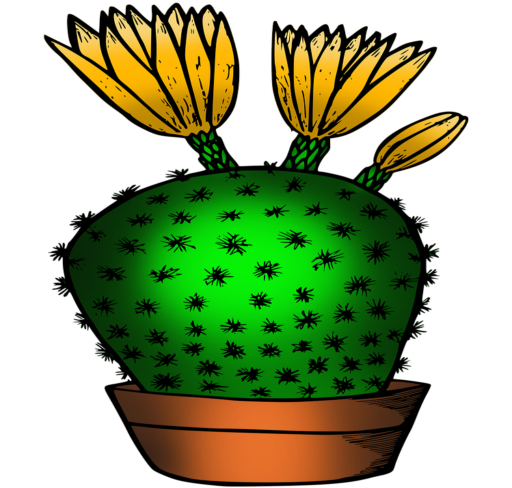How to Plant

Broccoli may be direct sown or started indoors early for fall and spring crops, or purchased as transplants for a fall crop.
Sowing Broccoli Seed Indoors
Start seeds indoors about 8 weeks before outdoor planting.
Sow seeds ¼ inches deep in seed-starting formula
Keep the soil moist at 70 degrees F
Seedlings emerge in 10-21 days
As soon as seedlings emerge, provide plenty of light on a sunny windowsill or grow seedlings 3-4 inches beneath fluorescent plant lights turned on 16 hours per day, off for 8 hours at night. Raise the lights as the plants grow taller. Incandescent bulbs will not work for this process because they will get too hot. Most plants require a dark period to grow, do not leave lights on for 24 hours.
Seedlings do not need much fertilizer, feed when they are 3-4 weeks old using a starter solution (half strength of a complete indoor houseplant food) according to manufacturer’s directions.
If you are growing in small cells, you may need to transplant the seedlings to 3 or 4 inch pots when seedlings have at least 3 pairs of leaves before transplanting to the garden so they have enough room to develop strong roots.
Before planting in the garden, seedling plants need to be “hardened off”. Accustom young plants to outdoor conditions by moving them to a sheltered place outside for a week. Be sure to protect them from wind and hot sun at first. If frost threatens at night, cover or bring containers indoors, then take them out again in the morning. This hardening off process toughens the plant’s cell structure and reduces transplant shock and scalding.
To plant in different desert locations refer to Planting Your Garden .
Sowing Directly in the Garden
Sow in average soil in a sunny location in early spring or in midsummer for a fall crop.
In rows 2 feet apart, sow seeds thinly and cover with ¼ inch of fine soil.
Keep evenly moist. Water gently.
Seedlings emerge in 10-21 days.
Thin to stand about 16 inches apart when seedlings are 1-2 inches high.
Planting from Transplants in Fall
Select a location in full sun with good rich moist organic soil.
Prepare the bed by turning the soil under to a depth of 8 inches. Level with a rake to remove clumps of grass and stones.
Dig a hole for each plant large enough to amply accommodate the root ball. Space plants 1-2 feet apart in rows 2 feet apart.
Carefully remove the plant from its pot and gently loosen the root ball with your hands to encourage good root development.
Place the top of the root ball even with the level of the surrounding soil. Fill with soil to the top of the root ball. Press soil down firmly with your hand.
Thoroughly water and apply a light mulch layer on top of the soil (1-2 inches) to conserve water and reduce weeds.
Broccoli Growing Tips
When growing broccoli seedlings indoors, be sure to provide plenty of light to prevent plants from becoming leggy. If long stems develop, try repotting the seedlings deeper (up to the first leaves) and then provide more light. Wait until frost-free weather has arrived before transplanting spring seedlings in the garden. Be sure to harden plants off by gradually exposing broccoli seedlings to direct sunlight and wind. Space broccoli plants 12 to 24 inches (30 to 61 cm.) apart. Providing more space between plants encourages larger central heads.
Broccoli prefers full sun. Choose a garden location which provides a minimum of 6 to 8 hours of direct sunlight daily.
Broccoli prefers a slightly acidic soil pH of 6 to 7. Try growing broccoli in an organic, rich soil and fertilize seedlings and young transplants to maintain steady growth. Use a balanced fertilizer, as too much nitrogen promotes excessive leaf growth. Potassium and phosphorus encourage bloom development.
Water regularly since broccoli grows best in moist soils. Mulch to control weeds and retain soil moisture levels.
To prevent disease and control pests, it’s best to plant broccoli in an area of the garden where you haven’t grown Brassicaceae (cabbage family) crops for four years. Row covers can be used to protect transplants from cold snaps, pests, and deer.
Keep weeds under control during the growing season. Weeds compete with plants for water, space and nutrients, so control them by either cultivating often or use a mulch to prevent their seeds from germinating. Avoid disturbing the soil around the plants when weeding.
Keep plants well watered during dry periods to promote rapid, uninterrupted growth.
Broccoli Seeds – Di Ciccio, Vegetable Seed…
Grow Heirloom Broccoli – Di Ciccio Broccoli Seeds: Introduced in 1890, Di Ciccio Brocco… [More]
Harvest and Preserving Tips
The edible part of the broccoli plant is the unopened flower. Ideally, the central head should be harvested when it’s fully developed, but before the individual buds open into small, yellow flowers. Pick broccoli when the heads have tight, firm buds. This happens about 50-60 days after transplant.
Signs which indicate broccoli is ready to harvest include a 4- to 7-inch tight head with large, dense flower buds. If the buds begin to open, harvest immediately. If the plant has bolted it’s too late to pick it.
To harvest, use a sharp knife to remove the central flower head. Leaving the broccoli plant in the ground encourages side shoots (flower heads) to develop. Although smaller than the central head, these side shoots allow gardeners to continue harvesting broccoli for a longer period. Cut off central head along with 6 inches of stem so broccoli plants will produce smaller heads, which can also then be harvested.
To maintain the quality of fresh-picked broccoli heads, it’s recommended to harvest during the cool, morning hours and refrigerate as soon as possible. Unwashed broccoli heads can be stored in the refrigerator for 3 to 5 days. Blanched broccoli freezes well and maintains its quality for up to 12 months. Cut florets and blanch them. To do this, drop into boiling water for 2 minutes, then plunge into cold water to stop the cooking, drain and store in freezer bags or vacuum bags.
